In this article we’ll be taking a look at the Milwaukee M18 Fuel Hammer Drill 2804-20 and this will be my honest review of the new high torque hammer drill. This is the Gen 3 version of this power tool introduced earlier this year 2018.
Ethic’s Disclosure:
Milwaukee was kind enough to provide the Milwaukee M18 Fuel Gen 3 Hammer Drill 2804-20 at no cost for review. However as with all my reviews, I am not paid, sponsored, or obligated to give a positive review. This review is my opinion of the product based on my usage and knowledge and my review will reflect what I like and dislike about the product. I will do my best to provide you with an unbiased review.
Manufacturer Features and Specs:
- Volts: 18V
- Torque: 1,200 in-lbs
- Speed: 2 Speed
- RPM: 0-550 / 0-2,000 RPM
- BPM: 0-32,000
- Chuck Type: 1/2″ All Metal Ratcheting Chuck
- Tool Length: 6.9”
- Tool Weight (w/ XC5.0 battery): 4.8 lbs
My Thoughts on Features:
Milwaukee’s M18 Fuel power tools have always been their flagship models with the all the latest and greatest features and performance coupled with their powerful brushless motors. The original M18 Fuel drill/driver & hammer drill models were the first ever high torque cordless drills featuring a brushless motor with 725 in-lbs torque and a separate mode collar ring in a compact (for it’s time) length of 8.1 inches. It really was the most compact and strongest high torque drill at the time they debuted. The Gen 2 model added more torque at 1,200 in-lbs torque and shrank it just a bit down to 7.75 inches in length and still kept the separate mode collar. However they somehow broke the side handle with a poor connection prone to breaking off when doing high torque work.
The Gen 3 model doesn’t receive any new features and the torque stays the same at 1,200 as the Gen 2 model, however it does get a massive overhaul in terms of size. It’s now a puny 6.9 inches in length making it the most compact cordless hammer drill to date at the time of writing!
Milwaukee says they redesigned from the ground-up, the REDLINK PLUS™ Intelligence features in these tools, drastically reducing the size of these sophisticated electronics to save space and increase thermal capacity and communication between the tool, motor, and battery. Both drill and impact mechanisms have been optimized to deliver this incredible raw power in the smallest package possible.
While I must say I am extremely impressed that they made their new Gen 3 high torque drills as compact as compact drills, an impressive feat I must say, I am greatly disappointed that they removed the separate mode collar. No doubt the separate mode collar was ditched to win the shortest drills race but at a great cost in my opinion. The separate mode collar is what separated the basic models from the premium models. I feel that the Milwaukee Fuel drills should include this feature to backup what the term Fuel stands for as their best, not only in performance but feature set. I always loved the ease of use of the separate mode collar which made selecting modes and torque settings much easier and faster on the fly. By giving up the separate mode collar, all the modes and torque settings are jumbled up in the same collar. It’s a personal preference that I wish Milwaukee didn’t have to give up however many users are accustomed to and used to using drills with a single collar, so for the masses, this change will not be a second thought. However for those of us that loved the separate mode collar, we will greatly miss it.
No new features are included in the new Gen 3 model however it does get a couple of revisions with the greatest update being the newly designed side handle connection. The side handle part that connects to the drill has been greatly redesigned and improved upon. They imitated Makita’s side handle design connection from the XPH07Z and this is a good thing because the connection problem that plagued the Gen 2 model is now gone as the Gen 3 handle stays firmly put even when the going gets tough. However I am still upset that Milwaukee stubbornly doesn’t add the ability to use a depth rod considering this is a hammer drill and all the other high torque hammer drills from Bosch, Dewalt and Makita all feature side handles with the ability to use depth rods which come in handy when hammer drilling so you don’t over drill. Milwaukee’s side handle also doesn’t rotate like Bosch or Dewalt models making the Gen 3 hammer drill’s side handle the least useful. It’s just a side handle and that’s it. You can place it to the left or right of the tool at 90 degrees but you can’t rotate it and you can’t install a depth rod.
The other revision on the Gen 3 model is a simple one. They moved the LED light to the bottom of the handle which faces up to the drill bits. This is inline with what the competition is doing as it helps a bit with illuminating the bits being used slightly better than if the LED light were below the chuck. Not a big update but a modern one.
The new Gen 3 Hammer Drill models also get a slightly updated cosmetic appearance with a spiffy new red ring of paint on the all metal 1/2″ ratcheting chuck. You still get the same nice rubber overmolding over the handle with a grippy texture. While the drivetrain internals are new on the Gen 3 models, they still offer the same drivetrain stats as the Gen 2 with the same RPM’s and BPM’s as before. 0-550/2000 and 0-32,000 respectively. It also comes with a belt clip and bit holder installed.
Performance:
Having the same torque and drivetrain stats it as the Gen 2 model, it was no surprise that the Gen 3 hammer drill performs about the same across the board and that’s not a bad thing as the Gen 2 model is still a beast. The Gen 3 hammer drill inherits the same impressive drilling and driving performance as it’s older Gen 2 brother however in a much smaller package!
To give you an idea of how powerful the Gen 3 model is, it can power through an Irwin 1-1/4″ Speedbor Max bit into a 4×4 with little to no hiccups. This is something all other high torque hammer drills prior to the Milwaukee M18 Fuel Gen 2 hammer drills couldn’t do either at all or without issues. The Gen 3 hammer drill also passed the 3-1/2″ x 5/16″ lag in second speed with flying colors! It sank it quick in one try. All 18V drills can do this on high torque speed one but they struggle or can’t on speed 2 while the Gen 3 hammer drill can easily do it with no predrilled pilot holes on speed two.
I also tried driving a thick 1/2″ x 3 inch long lag without a pilot hole to test it’s raw performance. Obviously it had to be done on speed one which is the high torque mode and it got about 75 percent (more or less) of the screw driven before the overload protection kicked in. I also understand that you have to predrill before driving such a large lag but this was done to test the drills raw torque performance. It seems as though the motor itself had enough huevos to finish the job but the overload protection prevents it. It may be intrusive but at the end of the day, it’s a safety feature to prevent the motor from burning out and extend the life of the tool. The drill required several re-attempts to finish the job.
High speed drilling with a largish 3-5/8″ hole saw on speed two was easy for the Gen 3. I ran a couple of holes and the first one with moderate pressure was drilled without a problem. I applied considerably more pressure on the second hole to see how it would do and I did cause the hammer drill to kick in it’s overload protection which shuts the tool down to protect the motor from burning out. I re-engaged the trigger and applied less but the correct amount of pressure and finished the hole. As I expected, the Gen 3 hammer drill did great with a 2-9/16″ self feed bit on speed one.
Hammer drilling was excellent on a concrete block for light duty hammer drilling applications and was done very speedily with 3/16″, 3/8″ and 1/2″ hammer drill bits. I didn’t test this bad boy out with actual high psi concrete like other tests but I suspect this hammer drill will struggle on 3/8″ hammer drilling and larger bits as cordless hammer drills aren’t very good at hammer drilling in cured poured concrete. I always recommend using a corded hammer drill or corded or cordless rotary hammers when hammer drilling into poured concrete.
Conclusion:
The Milwaukee M18 Fuel Gen 3 hammer drill builds on the already impressive Gen 2 model by offering the same outstanding 1,200 in-lbs torque performance yet in an incredibly smaller package making it the size of a compact drill. No new features were introduced in the Gen 3 model like additional speeds or advanced features, however they did improve the connection of the side handle that plagued the Gen 2 models so it no longer snaps off when the going gets tough. The side handle still doesn’t have the option to rotate or use a depth rod and Milwaukee decided to remove the “premium” mode select collar to shrink the drill as small as possible in length. With all that said, the Milwaukee M18 Fuel Gen 3 hammer drill stands as the smallest high torque hammer drill on the market (at the time of writing) with the size of a compact drill but with impressive performance beating out most high torque cordless hammer drills. It easily gets two big thumbs up.

DISCLOSURE:
Tool Craze does not sell this product or any product on the Tool Craze website. Tool Craze does not handle the sale of any item in any way. If you purchase something through a post on the Tool Craze site, Tool Craze may get a small share of the sale. Please refer to the About section for more info.

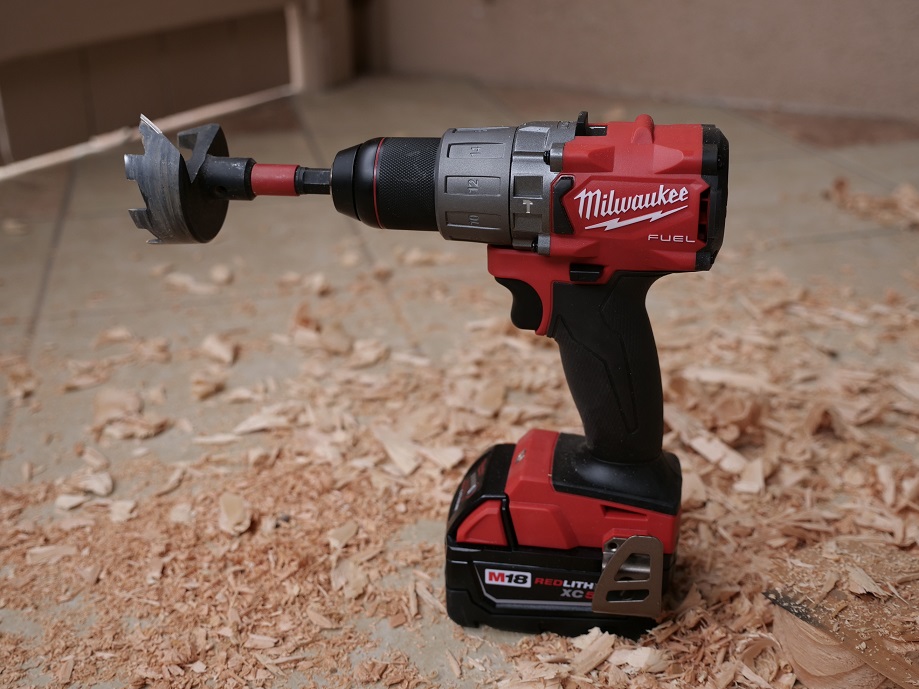
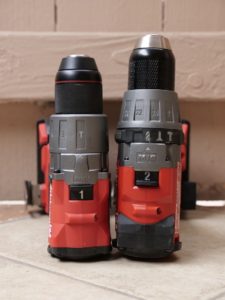
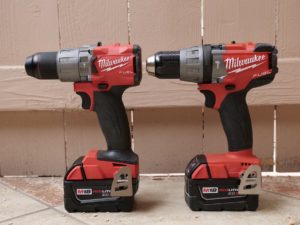
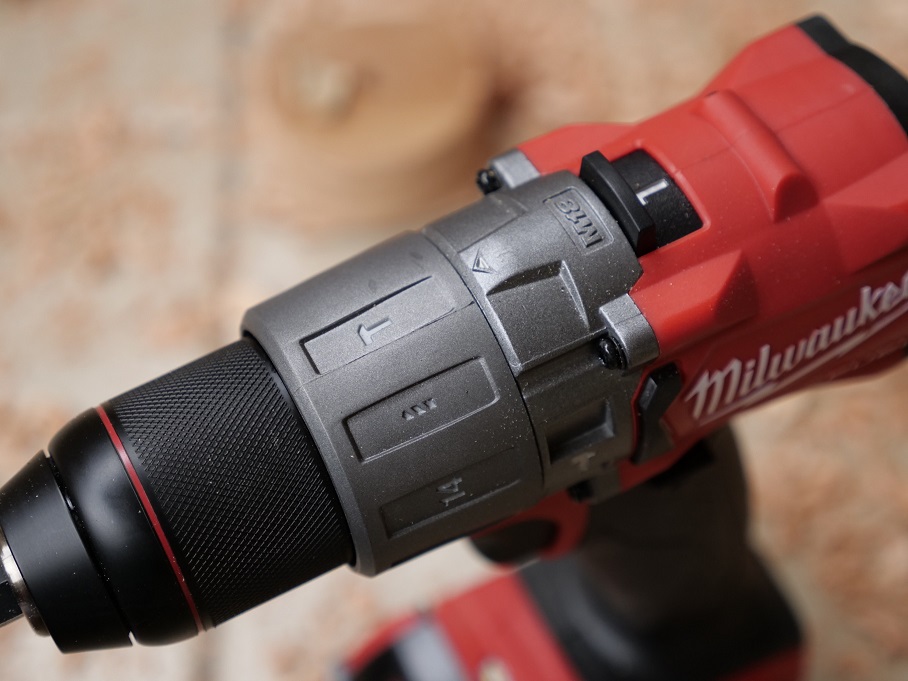
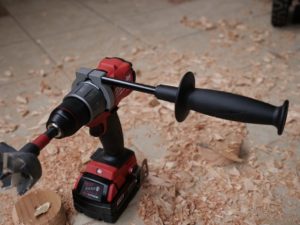
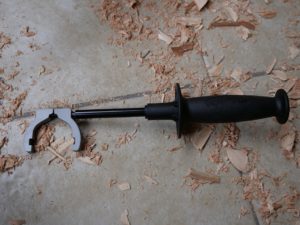
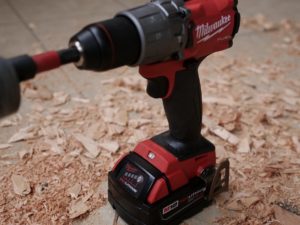
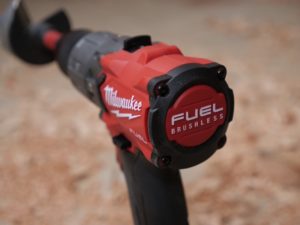

I was always annoyed when people would try to point out Milwaukee’s separate drill/drive/hammer selector as a feature other drills didn’t have. Outside of drive mode, every drill disables and maxes the clutch, that’s why it’s always been all modes+clutch on other drills. I’m glad to see they finally got rid of the confusing and pointless second selctor. Drill and hammer modes have always been max torque, regardless if an old Milwaukee had separate mode and clutch selectors that convinced some fools that they were hammer drilling at torque setting 5, for God knows what fool reason that might seem like a good idea lol This gen 3 set looks outstanding, and may well replace my dcd996 when I gets long on the tooth. I’ve always been impressed with Milwaukee’s drill smallish form factor, but own the DeWalt compact brushless and Makita subcompact drill/drivers for comfortable smaller drills.
That’s why at the end of the fifth paragraph I mentioned this:
“many users are accustomed to and used to using drills with a single collar, so for the masses, this change will not be a second thought. However for those of us that loved the separate mode collar, we will greatly miss it.”
This really was a premium feature that only people that had it and used it would appreciate. Not many people were able to try it since it was only on select models across different brands, which is no doubt why you don’t care for it. And no doubt they (Milwaukee) followed Dewalt’s approach to remove the mode collar to reduce the length even further. It’s not a decision I care for overall but it is nice to see it’s been greatly shortened due to it.
How does the M12 Fuel compare to non-fuel M18 compact brushless 2850-20 for delicate work like assembling flat-packed furniture? Already have M18 batteries and charger but M18 fuel is too powerful and would overdrive screws. M18 compact brushless is $99 and the cheapest M12 kit is $144 with batteries. M12 fuel is electronic clutch 1700 RPMs and 350 in./lbs. torque M18 brushless compact is mechanical clutch is 6.5 in. length 500 in. – lbs. of torque, 500-1800 RPM.
A powered screwdriver like the M12 screwdriver would be the best tool for the job if assembling furniture. An 18V drill’s torque collar is not designed for delicate fasteners such as those for assembling furniture. Even the M12 Fuel drills run the risk of too much torque for furniture assembly even at low values on the torque collar.
Meant to say how does non fuel compare to 2801-20 (2850 is the impact).
What about the electric clutch vs mechanical
Both do the same thing of limiting torque by stopping the drill from turning after a certain amount of torque is met, however the difference is in how it’s done, either mechanically like most drills have or electronically through software. You’ll know it’s mechanical if the motor continues to run but the bit does not turn the fastener and you’ll hear the drill make a ratcheting noise. You’ll know it’s electronic if the motor cuts off.